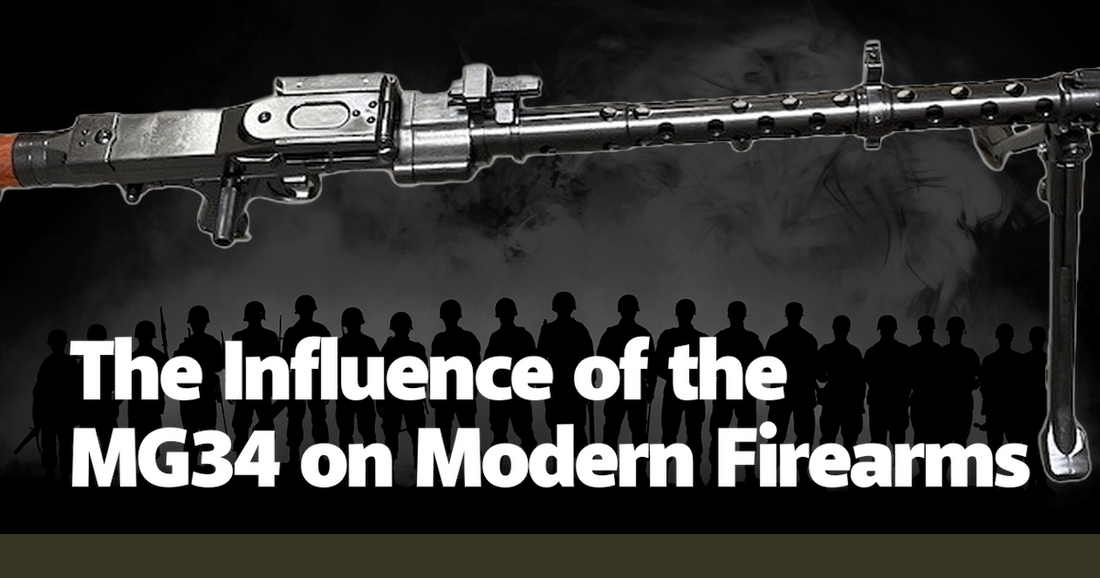The MG34, introduced by Germany in 1934, was a revolutionary piece of military hardware that forever altered the landscape of modern firearms. As the world's first general-purpose machine gun, it combined the roles of light and heavy machine guns into one versatile weapon. Its design allowed for both bipod and tripod mounting, making it adaptable to a variety of combat situations. This versatility set a new standard in firearm design, emphasizing adaptability and multifunctionality. The MG34's influence can be seen in the way modern military forces approach the development of their own machine guns, prioritizing flexibility and efficiency.
One of the most remarkable aspects of the MG34 was its rate of fire. Capable of firing 800 to 900 rounds per minute, it outpaced many of its contemporaries and set a new benchmark for machine gun performance. This high rate of fire was achieved through innovative engineering, including a recoil-operated firing mechanism and a quick-change barrel system. These features not only enhanced the weapon's effectiveness in battle but also influenced subsequent designs. Modern machine guns, such as the M240 and the FN MAG, have incorporated similar quick-change barrel systems to maintain high rates of fire without overheating, a direct nod to the ingenuity of the MG34.
The MG34 was not just a technical marvel; it was also a symbol of German military prowess during World War II. Its presence on the battlefield was a psychological weapon as much as a physical one. The distinctive sound of its rapid firing became synonymous with the might of the Wehrmacht. Anecdotes from soldiers on both sides of the conflict often highlight the dread and respect the MG34 commanded. This psychological impact has carried over into modern warfare, where the sound and presence of machine guns continue to play a crucial role in battlefield dynamics.
In terms of ergonomics and usability, the MG34 was ahead of its time. It featured a relatively lightweight design for a machine gun of its era, weighing around 12 kilograms. This made it easier to transport and deploy in various combat scenarios. The weapon's bipod and tripod options allowed for both mobile and stationary use, providing soldiers with the flexibility to adapt to changing battlefield conditions. Modern firearms have continued this trend, with contemporary designs like the M249 SAW (Squad Automatic Weapon) and the PKM machine gun offering similar versatility and ease of use.
The MG34 also set a precedent in terms of manufacturing and production techniques. It was one of the first firearms to be mass-produced using stamped metal parts, a method that significantly reduced production costs and time. This approach has been widely adopted in the production of modern firearms, enabling the rapid and cost-effective manufacture of weapons on a large scale. The AK-47, one of the most ubiquitous firearms in the world, owes much of its production efficiency to the techniques pioneered by the MG34.
Another significant influence of the MG34 is seen in its operational doctrine. The concept of a general-purpose machine gun that could be used in a variety of roles—from providing suppressive fire to serving as an anti-aircraft weapon—was groundbreaking. This doctrine has been adopted and refined by modern military forces, who now routinely deploy machine guns in multiple roles to maximize their effectiveness. The MG34's legacy is evident in the way contemporary armies integrate machine guns into their tactical frameworks, emphasizing versatility and adaptability.
The MG34's impact extends beyond the battlefield to the realm of firearm design and innovation. Its success spurred a wave of research and development in the field of automatic weapons, leading to the creation of even more advanced and efficient designs. The MG42, often considered the MG34's successor, took many of its best features and improved upon them, further influencing modern firearms. The principles of high rate of fire, versatility, and ease of use that the MG34 embodied continue to guide the development of new machine guns and automatic weapons.
In conclusion, the MG34 was more than just a weapon; it was a paradigm shift in the world of firearms. Its innovative design, high rate of fire, and versatility set new standards that have influenced countless subsequent designs. The psychological impact it had on the battlefield, combined with its practical advantages, made it a formidable tool of war. Modern firearms, from the M240 to the AK-47, bear the imprint of the MG34's pioneering design and operational concepts. As we continue to develop new military technologies, the legacy of the MG34 serves as a reminder of the profound impact that a single, well-designed weapon can have on the course of history.

